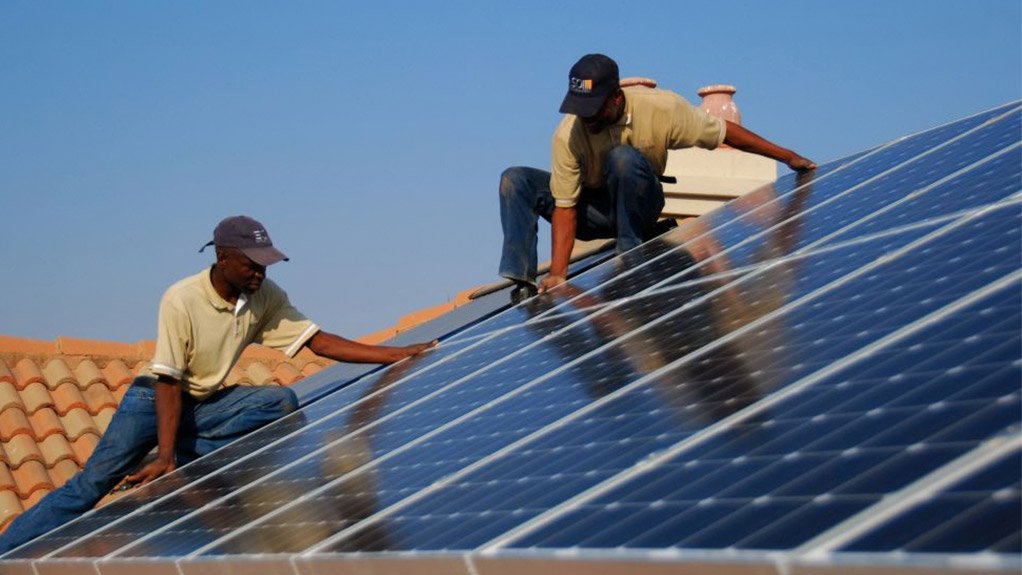Opinion: Highlights of upcoming code for embedded generation
In this article, South African Photovoltaic Industry Association board member Frank Spencer offers insight on the upcoming SANS 10142-1 standards for embedded generation installations
The South African Bureau of Standards supported by industry, has been developing codes for the safe connection of Small-Scale Embedded Generation (SSEG) to Low-Voltage (LV) grids. The extension to the SANS10142-1 SA LV wiring code (namely the SANS 10142-2-1 for LV SSEG), was last drafted for comment on May 5. It defines embedded generation (EG) as devices which are synchronous with the grid. The whole EG plant is referred to as an embedded generation installation (EGI).
One problematic item is that the code says that EGI’s with batteries cannot operate in island mode without first disconnecting from the grid. This is far from ideal, as it implies a short grid interruption is required during changeover. The disconnection from the grid and switch to island mode should happen simultaneously, or within two seconds). Hopefully this will be resolved before the final code is published.
The code covers a significant amount of detail across the whole of the EGI (including signage, earthing, cable sizing, fusing, roof wind loads), but I would like to highlight a few important aspects.
Firstly, it is a requirement that all systems be isolated from the grid in case of a utility technician working on the plant. This can be accomplished in two ways:
a utility safety switch, which is an isolator at the POC that a technician can use to isolate all downstream customer infrastructure, including the EG; or
a dead grid safety lock, which is a device that automatically disconnects the EGI from the grid during a grid-loss event and is incapable of reconnecting to the grid until the grid returns to normative conditions. The device needs to be separate from the EGI itself and cannot be the inverters.
Second, all transformer-less inverters must have built-in Residual Current Fault detection of type B.
Thirdly, all EGI systems with batteries are required to have a neutral-earth linkage switch to engage when transitioning from grid-supply to island-supply. Be careful not to end up with earth loops.
Fourth, over-current protection (fuses) for strings are required if cable rating is less than 1.56 x I_SC (string short circuit current), and only on one phase unless they run next to each other, in which case both phases are required. Reverse current protection on the strings is also required when three or more strings in parallel.
Fifth, the ability to isolate is required on both the AC side and DC side of the inverters and these cannot be fuses, they must be switch-based isolators, or breakers. The exception is if you have a combiner box with a DC isolator switch within 2m of the inverter.
Sixth, DC cables longer than 50 m are required to be in earthed metal conduits or be armoured cable.
Lastly, all EGI plant requires a planned maintenance schedule and a maintenance manual be should be included in the handover of the plant.
Many of the requirements mentioned above will now become part of the required CoC SANS 10142-1 inspection where there are LV SSEG.
Comments
Press Office
Announcements
What's On
Subscribe to improve your user experience...
Option 1 (equivalent of R125 a month):
Receive a weekly copy of Creamer Media's Engineering News & Mining Weekly magazine
(print copy for those in South Africa and e-magazine for those outside of South Africa)
Receive daily email newsletters
Access to full search results
Access archive of magazine back copies
Access to Projects in Progress
Access to ONE Research Report of your choice in PDF format
Option 2 (equivalent of R375 a month):
All benefits from Option 1
PLUS
Access to Creamer Media's Research Channel Africa for ALL Research Reports, in PDF format, on various industrial and mining sectors
including Electricity; Water; Energy Transition; Hydrogen; Roads, Rail and Ports; Coal; Gold; Platinum; Battery Metals; etc.
Already a subscriber?
Forgotten your password?
Receive weekly copy of Creamer Media's Engineering News & Mining Weekly magazine (print copy for those in South Africa and e-magazine for those outside of South Africa)
➕
Recieve daily email newsletters
➕
Access to full search results
➕
Access archive of magazine back copies
➕
Access to Projects in Progress
➕
Access to ONE Research Report of your choice in PDF format
RESEARCH CHANNEL AFRICA
R4500 (equivalent of R375 a month)
SUBSCRIBEAll benefits from Option 1
➕
Access to Creamer Media's Research Channel Africa for ALL Research Reports on various industrial and mining sectors, in PDF format, including on:
Electricity
➕
Water
➕
Energy Transition
➕
Hydrogen
➕
Roads, Rail and Ports
➕
Coal
➕
Gold
➕
Platinum
➕
Battery Metals
➕
etc.
Receive all benefits from Option 1 or Option 2 delivered to numerous people at your company
➕
Multiple User names and Passwords for simultaneous log-ins
➕
Intranet integration access to all in your organisation





















